Greengages, plums and damsons – what's the difference?
Want to know what sets greengages, plums and damsons apart from one another? We reveal all when it comes to these delicious stone fruits
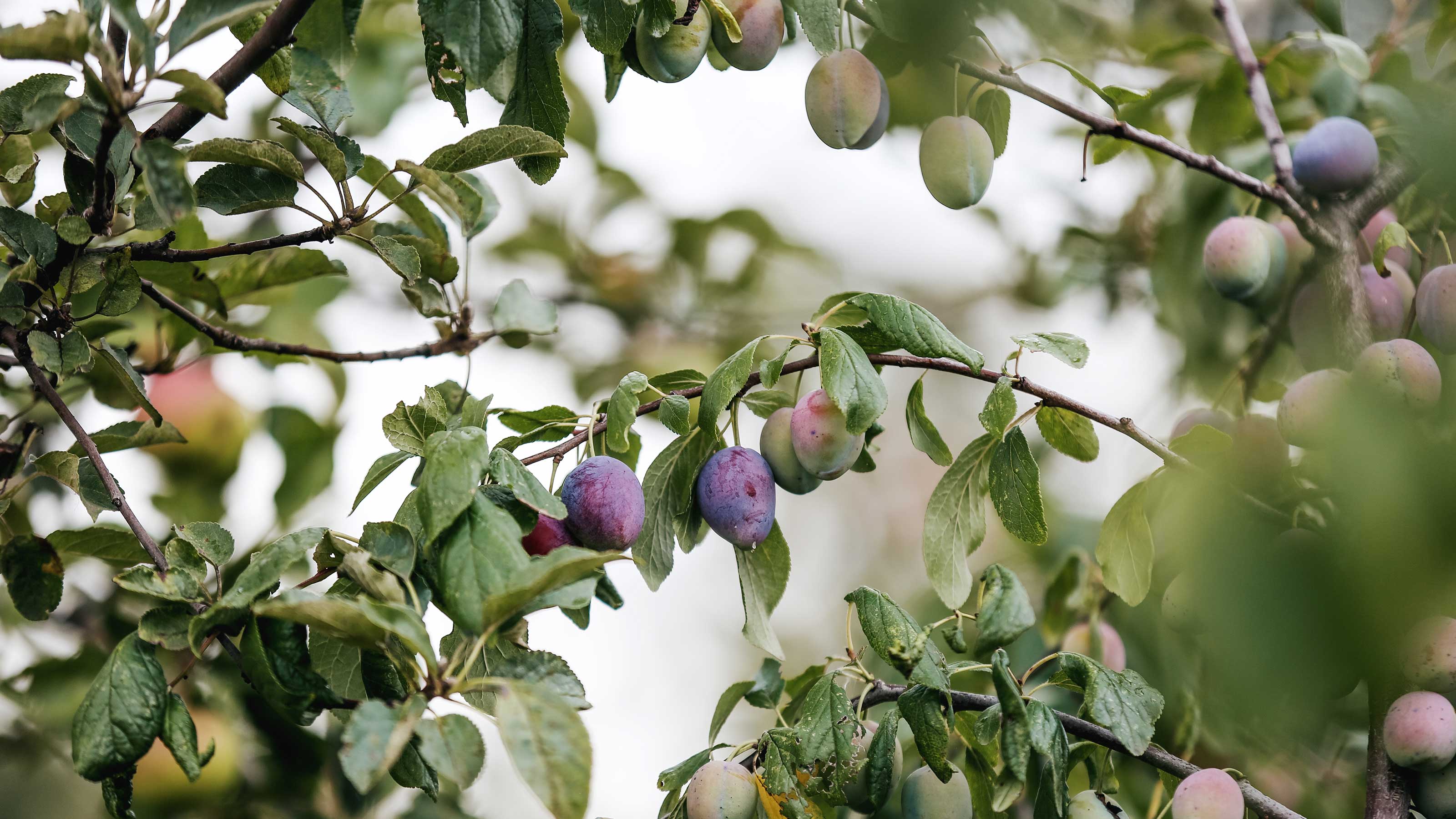
When it comes to greengages, plums and damsons, it's easy to get confused. They're all very similar, grow in the same sort of way, and come from the same family. So how do you tell the difference between them?
Well, we're here to explain. That way, before you go and learn exactly how to grow plums, you can decide the best type for your garden. After all, these plump, juicy, prolific and flavorsome stone fruits are a veritable feast for the senses, so you won't want to miss out.
Know your greengages, plums and damsons
The plum family falls into two broad categories: Japanese and European. Japanese plums tend to be fat and red and thrive in warmer regions, while European kinds are smaller, oval, and happy in cooler climes. European plums also tend to be self-fruiting (otherwise known as self-pollinating), so you only need one tree to enjoy a harvest. Greengages and damsons are types of European plum.
When choosing the type of plum to grow, the first thing to decide is whether you want fruits for eating fresh or for cooking, or both. Tastes vary from spicy and acidic to soft and aromatic – and these flavors can be more or less pronounced, depending on whether you grow one on its own or with other breeds.
While there are clearly some overlaps in flavor between greengages, plums and damsons, it can help to understand their differences, says Amateur Gardening's fruit and veg expert, Lucy Chamberlain. This will have some bearing on where you plant them, how long you let them ripen, any steps you need to take to protect them from disease, and certainly the types of dishes to which they are best suited.
We've rounded up all the info you need to help you choose the right one for your plot.
1. Plums

True European plums are oval and fleshy, like a tangy peach. They are less fussy about warmth than Japanese plums and greengages, and are differently shaped to damsons.
New breeds mean better disease resistance and increased hardiness, relaxed growing conditions, and colors ranging from yellow to blue and every shade of pink and purple in between. Ripening can occur from mid-July to early October, depending on the cultivar.
Good dessert types to try include 'Blue Tit', 'Early Laxton', 'Opal' and 'Victoria'. If you want a plum for cooking, try 'The Czar', 'Marjorie's Seedling', 'Pershore' and 'Belle de Louvain'.
- Looking for more fruit crops for your plot? Our guides on how to grow raspberries and how to grow blueberries might come in handy.

Japanese plums tend to fruit a little earlier than European plums, and have a longer shelf life once picked. They are generally eaten fresh rather than used for cooking, and have a mild sweetness with slight tartness. Often with dark reddish skins, they are rounder than European plums and are 'clingstones' – whereby the flesh 'clings' to the stone.
The Japanese plum trees are less hardy than European ones and prefer warm climates – similar to that of a peach tree. They usually need to cross-pollinate with a second variety to produce fruit, so aren't a great choice if you're after small garden ideas.
Good types to try include 'El Dorado', 'Santa Rosa', and 'Friar'.
2. Damsons
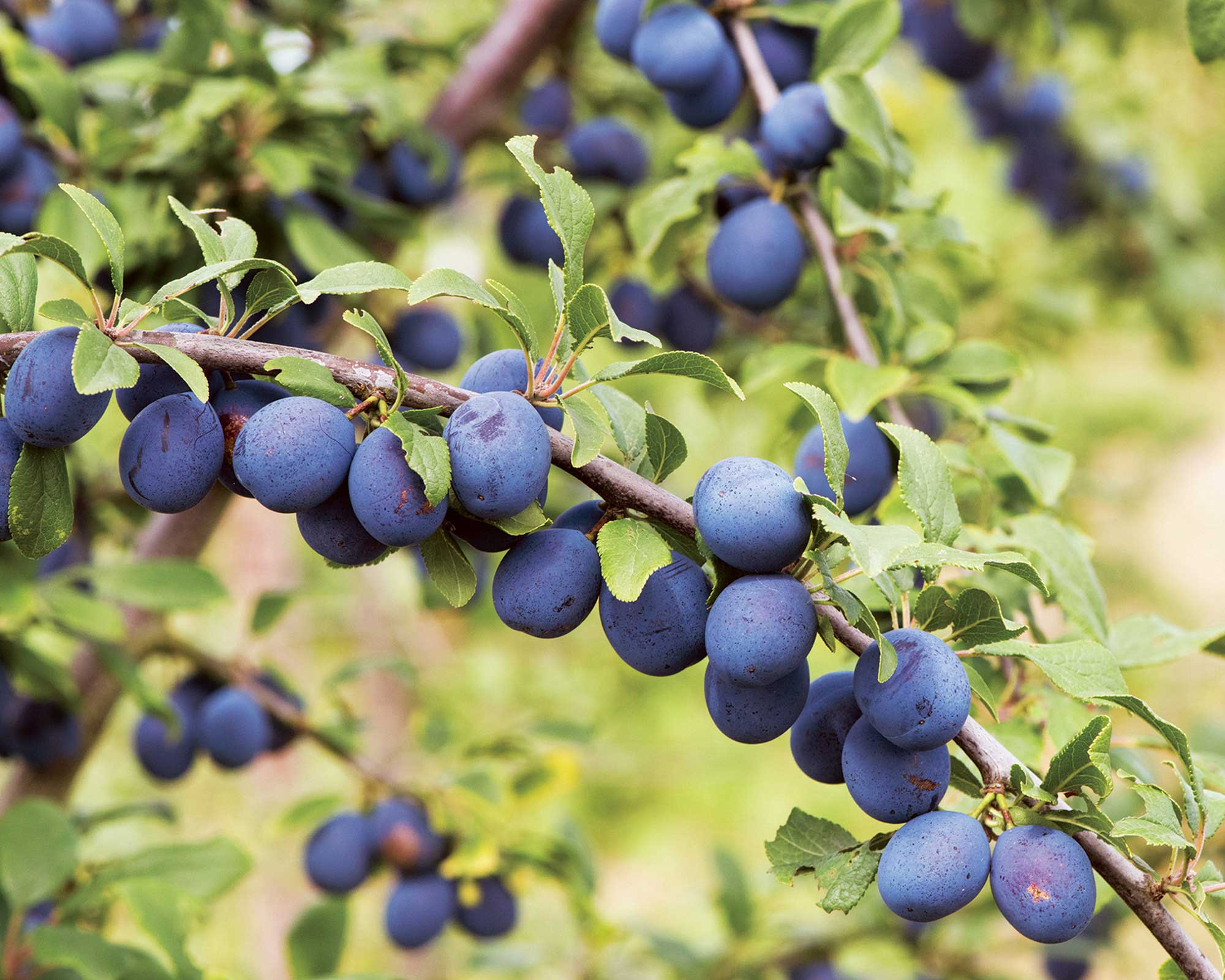
Also known as the 'damascene', the damson (Prunus insititia) predates the plum by some distance, and has a wilder background. It is said they were cultivated 10,000 years ago!
Damsons are longer in shape than plums. They generally have deep blue skins and they are spicier and more tart, making them better for cooking. They're a popular pick for jam making.
Damsons also have a reputation for being hardier, thanks to their wild ancestry. They are more forgiving and even less fussy than European plums – but they are susceptible to silver leaf disease. Ripening occurs slowly in September and October.
Good types to try include ‘Farleigh’, ‘Merryweather’ and ‘Prune Damson’.
You can also grow damsons in containers – often even more successfully than plums – providing you use a suitable rootstock. You can find more of our picks for the best fruit trees to grow in pots in our guide.
3. Greengages
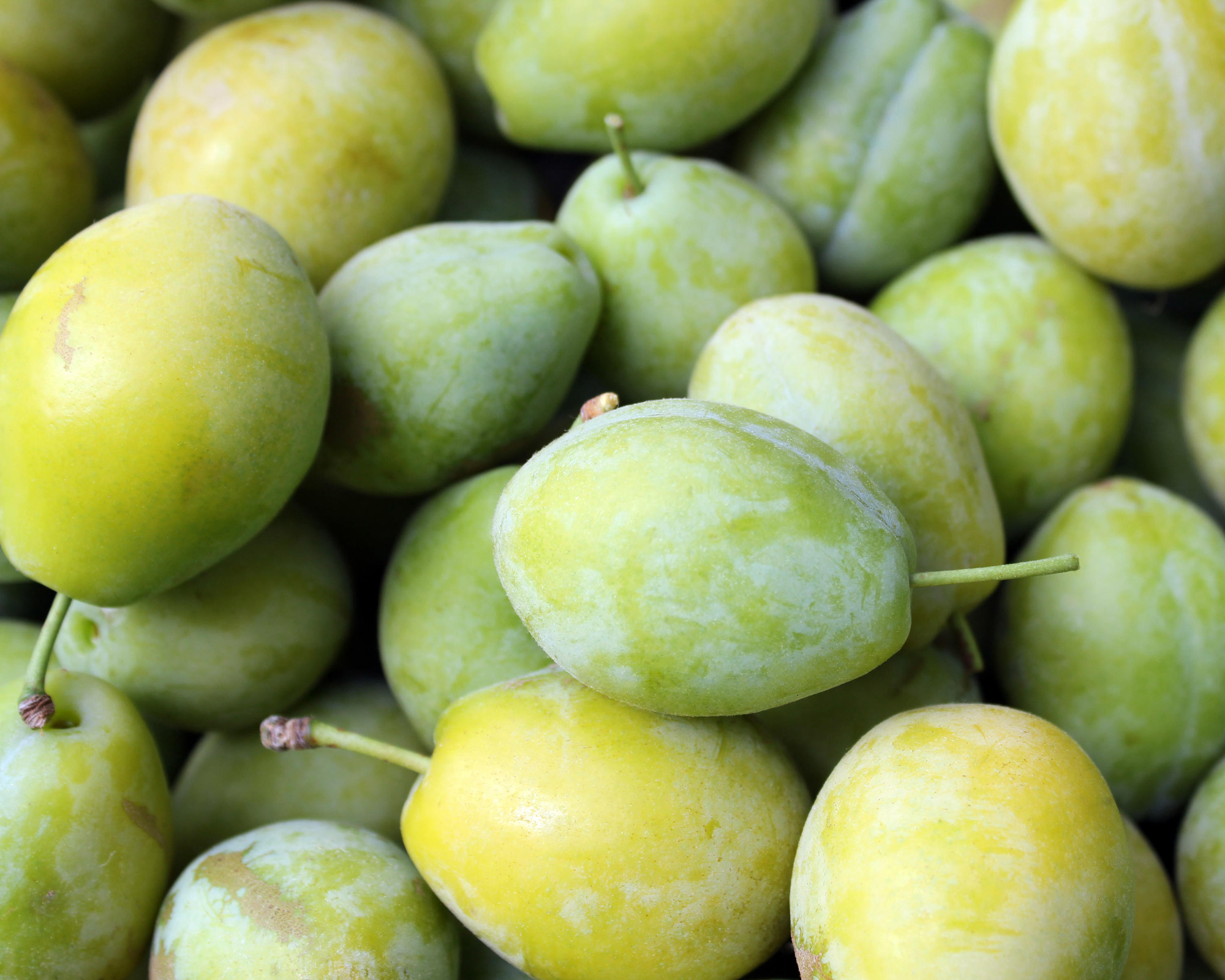
The green appearance of most gages may lead you to believe that they're sour and unripe, but actually, they can be very sweet. A cultivar of the European plum, they tend to be smaller than true plums and have a rounded, oval shape.
They grow best when planted somewhere sunny and sheltered. Fruits tend to be ready to harvest between August and October, depending on the cultivar. Some are great for using in jams or baking, whilst others can be eaten fresh.
Watch out for wasps, which can be attracted to greengage trees. You can learn how to get rid of wasps with our practical guide.
Try 'Cambridge Gage', which the RHS call the 'most reliable of the gages.' Bear in mind that it does grow vigorously and needs a warm garden, however. 'Imperial Gage' is another reliable choice with slightly more yellow fruits.
What other types of plums are there besides damsons and greengages?
As well as these core stone fruits, you may come across other relatives such as the bullace (which is like a tiny damson) and the sloe (the blackthorn fruit with a plummy taste).
Then there are the mirabelle plums (also known as cherry plums, because the fruits look like large cherries). Mirabelles are high-sugar cultivars and a popular choice for fruit brandy. They are most commonly grown in Lorraine, France and are very difficult to find in the US.
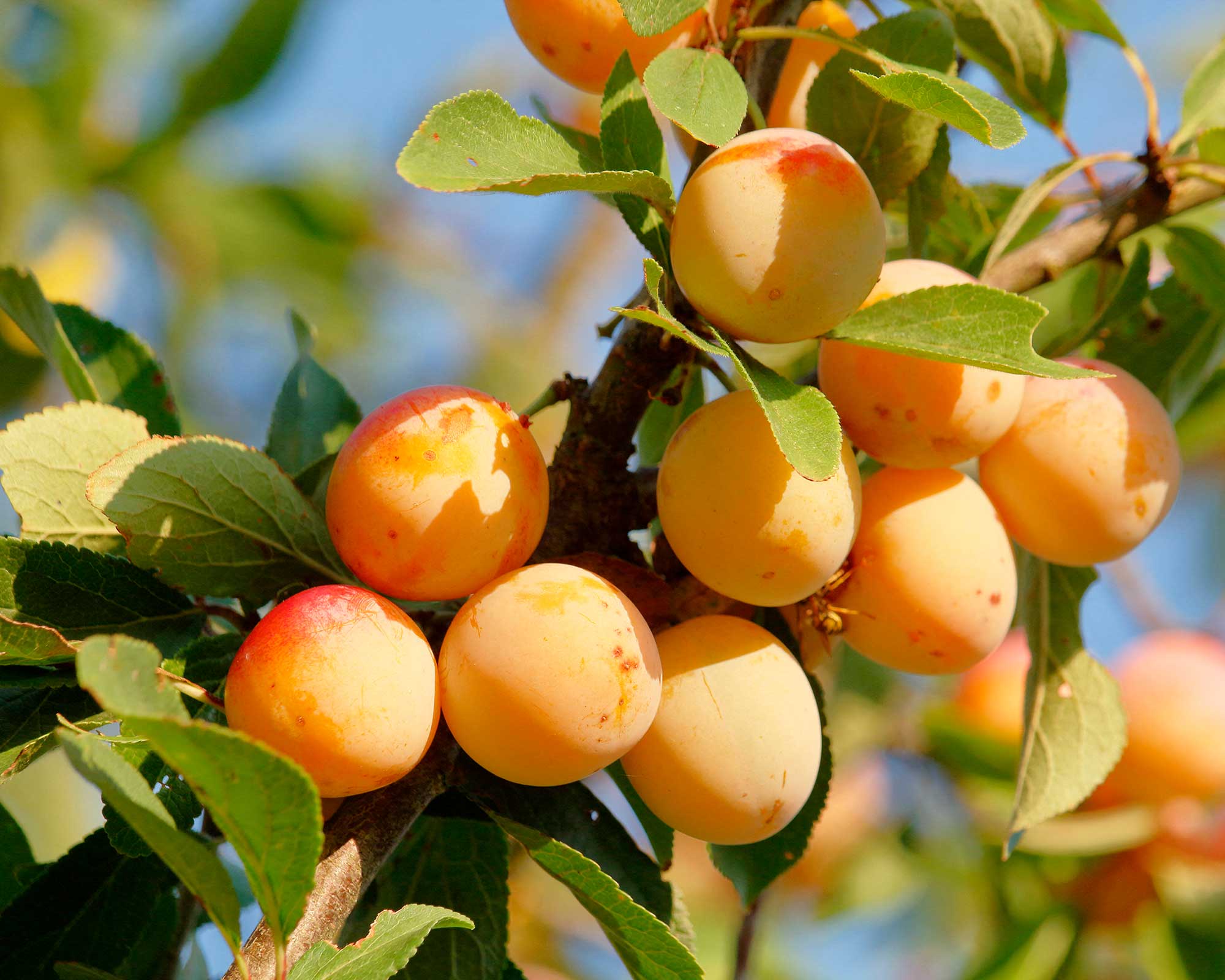
Which type of plum should you choose for your garden?
Of course, the taste will factor into your decision making, but the best type of plum to grow will also largely depend on your region and the quality of sunshine and shelter you can provide. Gages generally prefer things warmer, whereas damsons and late-flowering plums such as 'Blue Tit' and 'Marjorie's Seedling' (plus 'Oullins Gage') are great for colder areas.
You'll also want to think about size. Plum, damson and gage trees are grafted onto different rootstocks, which essentially help to determine the eventual size of the tree. These rootstocks can also have a bearing on when the tree will start fruiting. It can take up to 10 years for plum trees to reach maximum height, and at least three or four years after planting before fruits start to appear. Check the label before you buy so you'll know what to expect.
Size and productivity can also be affected by other conditions, such as the form of training you apply to the tree, whether you grow it near a garden wall or fence, and the variety – so bear all this in mind and choose wisely.
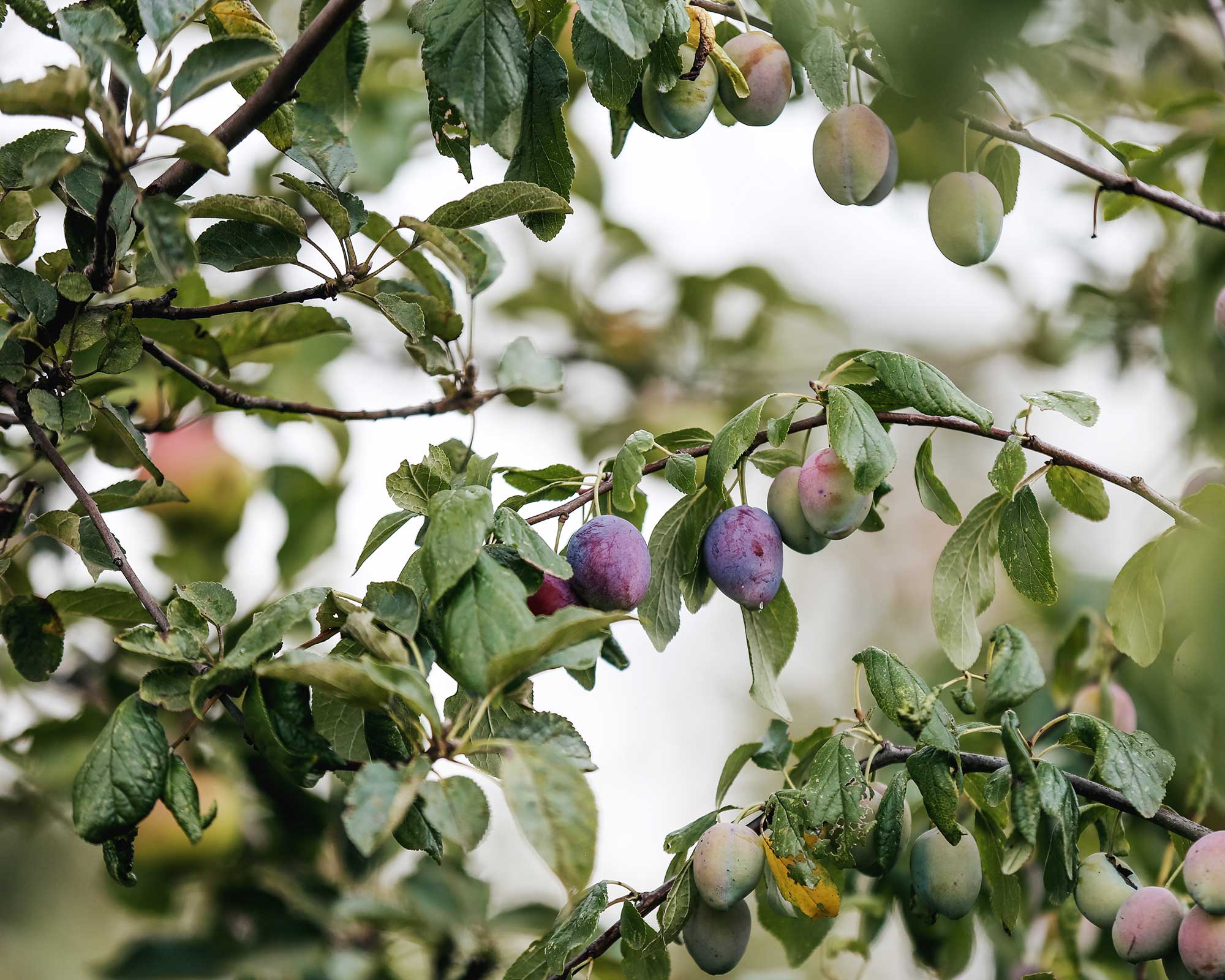
Can you grow damsons, plums and greengages together?
Plum trees are easy to grow, but you can boost your chances of success if you grow a plum alongside a gage or damson, even if your chosen varieties are self-pollinating. The combinations can enhance both the volume and the depths of flavor.
Remember to check if your chosen variety needs to be cross-pollinated to produce fruit. If so, pick another tree from the same, or from an adjacent, pollination group.
You can find more good growing matches for other plants in our guide to companion planting.

As assistant editor of Amateur Gardening magazine, Janey's gardening passion was fostered from an early age, when her amazing mum had her deadheading hydrangeas, mulching roses, and propagating strawberry plants from runners for school open days. She's also taken part in lots of conservation and rewilding projects for the RHS and TCV as a way of exploring her horticultural horizons.


